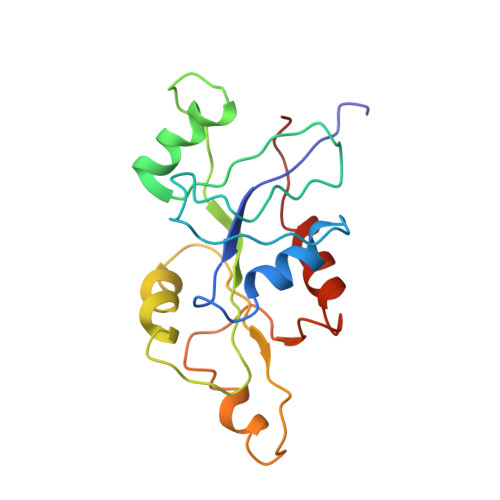Structural insights into the GTPase domain of Escherichia coli MnmE protein.
Monleon, D., Martinez-Vicente, M., Esteve, V., Yim, L., Prado, S., Armengod, M.E., Celda, B.(2007) Proteins 66: 726-739
- PubMed: 17143896
- DOI: https://doi.org/10.1002/prot.21186
- Primary Citation of Related Structures:
1RFL - PubMed Abstract:
The Escherichia coli MnmE protein is a 50-kDa multidomain GTPase involved in tRNA modification. Its homologues in eukaryotes are crucial for mitochondrial respiration and, thus, it is thought that the human protein might be involved in mitochondrial diseases. Unlike Ras, MnmE shows a high intrinsic GTPase activity and requires effective GTP hydrolysis, and not simply GTP binding, to be functionally active. The isolated MnmE G-domain (165 residues) conserves the GTPase activity of the entire protein, suggesting that it contains the catalytic residues for GTP hydrolysis. To explore the GTP hydrolysis mechanism of MnmE, we analyzed the effect of low pH on binding and hydrolysis of GTP, as well as on the formation of a MnmE transition state mimic. GTP hydrolysis by MnmE, but not GTP binding or formation of a complex with mant-GDP and aluminium fluoride, is impaired at acidic pH, suggesting that the chemistry of the transition state mimic is different to that of the true transition state, and that some residue(s), critical for GTP hydrolysis, is severely affected by low pH. We use a nuclear magnetic resonance (NMR)-based approach to get insights into the MnmE structure and properties. The combined use of NMR restraints and homology structural information allowed the determination of the MnmE G-domain structure in its free form. Chemical shift structure-based prediction provided a good basis for structure refinement and validation. Our data support that MnmE, unlike other GTPases, does not use an arginine finger to drive catalysis, although Arg252 may play a role in stabilization of the transition state.
Organizational Affiliation:
Department of Physical Chemistry, University of Valencia, C/Dr. Moliner, 50, Burjassot 46100 Valencia, Spain.














